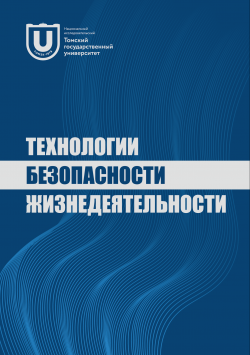Semiconductor sensors of saturated vapors of explosives and multisensor systems based on them
The paper presents the results of research aimed at developing physical principles and technological solutions for creating original highly sensitive sensors based on thin nanocrystalline films of tin dioxide capable to detect the trace of vapors of nitro - explosives. The sensors were fabricated by DC magnetron sputtering using several photolithography steps. To measure the parameters of sensors under the influence of saturated vapors of explosives, an original special quartz chamber was made. The resistance R0 and conductivity G0 of the films were investigated in clean air, as well as under the influence of trinitrotoluene (TNT) and hexogen (RDX) vapors R1 (Gi) depending on the operating temperature in the modes of constant and pulsed heating. It has been established that for the detection of traces of TNT and RDX, it is expedient to use doped by antimony SnO2: Sb films, with a deposited on the surface three-layer dispersed Au/Pt/Pd catalyst, with platinum electrodes and a heater. A significant increase in the response is observed when the sensors are operated in the experimentally found optimal thermal cycling modes. The processes responsible for the formation of the response can be represented as follows. In the presence of Pt/Pd clusters on the surface of thin nanocrystalline tin dioxide films in the heating cycle at temperatures of T1 = 220-240 °C (at duration t1 = 5 s), dissociative adsorption of explosive molecules occurs. Nitrogen dioxide is released, which, in the presence of a catalytic Au layer, is adsorbed on the sensor surface. NO2, in turn, is a catalyst for the further decomposition of TNT and, in particular, RDX, contributing to an increase in the density of the negative charge and an increase in the sensor resistance. The maximum response to NO2 is detected in the cooling cycle at temperatures T2 = 70-100 °C (at duration t2 = 3 s). At temperatures above 340 °C, the organic base of the explosive molecule reacts with oxygen atoms adsorbed on the surface of the sensor film, resulting in an increase in the sensor conductivity. These data can be used for selective detection of explosives if a chain of two identical sensors operating in different thermal cycling modes is created. A sign of the presence of explosive vapors in the atmosphere is an increase in the resistance of the sensor operating at a lower temperature and a drop in the resistance of the sensor operating at a higher temperature. When creating a prototype of a multisensor system for detecting explosive vapors, the task was to issue a signal no later than 10 sec from the moment of sampling from a container with TNT granules. It was assumed that the system continuously takes samples, and the incoming air is not specially processed in any way (i.e., it is not cleaned or dried). The logic of the multisensor is implemented in the four-channel bench control program, using an Excel-like system. The authors declare no conflicts of interests.
Keywords
trinitrotoluene, hexogen, saturated vapor concentration, thin films, tin dioxide, catalysts, sensors, multisensor systemAuthors
| Name | Organization | |
| Maksimova Nadezda K. | Tomsk State University | nkmax3@yandex.ru |
| Malinovskaya Tatyana D. | Tomsk State University | malintd@yandex.ru |
| Sevastyanov Evgenii Yu. | Tomsk State University | sese@ngs.ru |
| Chernikov Evgenii V. | Tomsk State University | evvch192184@gmail.com |
| Sergeychenko Nadezhda V. | Tomsk State University | edelveisu@yandex.ru |
References

Semiconductor sensors of saturated vapors of explosives and multisensor systems based on them | Tekhnologii bezopasnosti zhiznedeyatelnosti – Life Safety/Security Technologies. 2023. № 1. DOI: 10.17223/7783494/1/9
